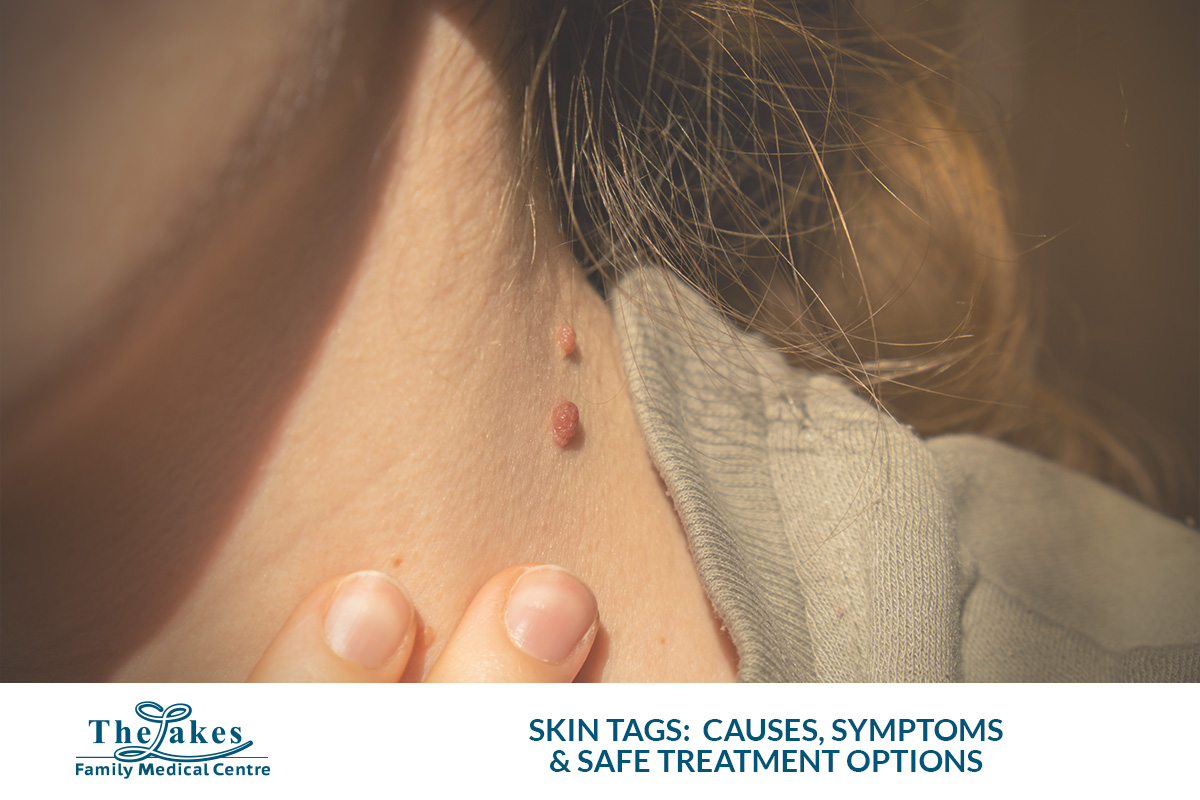
Skin tags are a common skin concern, especially as people get older. While they are harmless, they can be irritating or unsightly. At Lakes Family Medical Centre, we regularly help patients understand what skin tags are, why they develop and when it might be appropriate to remove them.
In this article, we explain everything you need to know about tags from causes and symptoms to diagnosis and safe removal options.
What Are Skin Tags?
Skin tags, also known as acrochordons, are small, soft, flesh-coloured growths that hang off the skin. They contain collagen fibres, blood vessels and skin tissue and usually range from 1mm to 1cm in size. Some may grow larger over time.
You can easily identify a skin tag by its thin stalk that attaches it to the skin. Unlike warts or moles, skin tag tend to be soft, smooth and pendulous, meaning they dangle or hang loosely from the skin.
Where Do Skin Tags Commonly Appear?
Tags most often appear in areas where the skin folds or rubs together. This friction creates the ideal conditions for them to develop.
Common areas include:
- Neck
- Armpits
- Eyelids
- Under the breasts
- Groin
- Thighs
Although they can appear anywhere on the body, it typically occur in these high-friction zones.
What Are the Symptoms of Skin Tags?
In most cases, skin tags do not cause pain or discomfort. You might not even notice them until they grow larger or catch on clothing.
However, symptoms can arise when:
- They rub against jewellery, clothing or skin
- They become irritated or inflamed
- They bleed if accidentally pulled or scratched
- They change in colour or appearance, which requires medical review
Unlike flat warts or raised moles, skin tags have a distinct stalk and often move easily when touched.
What Causes Skin Tags?
Although the exact cause of skin tags remains unclear, research suggests that both lifestyle factors and genetics play a role. In particular, skin friction is believed to be a key contributor.
You are more likely to develop skin tags if you:
- Are overweight or obese, which increases skin friction
- Have type 2 diabetes or insulin resistance
- Are pregnant, due to hormonal changes
- Are over the age of 40
- Have a family history of skin tags
In some cases, people may develop several skin tags at once, particularly in areas of ongoing friction or hormonal imbalance.
Are Skin Tags Dangerous?
No, skin tags are non-cancerous and harmless. However, because other skin conditions such as melanoma or skin cancer can resemble benign growths, it is important to have new or changing lesions checked by your GP.
If you have noticed a skin tag growing, bleeding or changing colour, seek medical advice. Early assessment ensures peace of mind and helps rule out more serious conditions.
When Should You See a Doctor?
It is always a good idea to speak with your GP when you notice new skin growths or changes in existing ones.
You should book a GP consultation if:
- A skin tag becomes painful, infected or irritated
- You are unsure whether it is a skin tag, wart or mole
- You want to explore safe removal options
- You experience multiple skin tags forming quickly
Your doctor will examine the growth and confirm whether it is a skin tag or something requiring further investigation.
How Do Doctors Diagnose Skin Tags?
Your GP can usually diagnose a skin tag with a simple physical exam. Most cases do not require any additional testing or biopsy unless the lesion has unusual features.
At Lakes Family Medical Centre, our doctors have the expertise to quickly identify skin tags and provide personalised advice on management or removal.
What Are the Treatment Options for Skin Tags?
Although treatment is not medically necessary, many people choose to remove skin tag for cosmetic reasons or to prevent ongoing irritation.
Doctors can safely remove using the following methods:
1. Cryotherapy (Freezing)
We apply liquid nitrogen to freeze the skin tag, which causes it to fall off after a few days. This quick, low-risk method is ideal for small tags.
2. Excision (Cutting)
We use sterile scissors or a scalpel to cut off the skin tag at the base. This procedure provides instant results and requires minimal recovery time.
3. Hyfrecation (Cauterisation)
This method uses electrical energy to burn off the tag and seal the skin. It is effective for slightly larger tags or those in awkward locations.
These procedures are generally done in-clinic, with minimal discomfort and very low risk of infection or scarring.
Can You Remove Tags at Home?
While online removal kits and home remedies claim to offer DIY solutions, self-removal is not recommended.
Attempting to remove a skin tag at home can lead to:
- Heavy bleeding
- Infection
- Permanent scarring
- Incomplete removal, resulting in regrowth
Instead, consult your GP to ensure safe, sterile and effective removal.
Can You Prevent Skin Tag?
You cannot fully prevent it, but you can reduce your risk by addressing key lifestyle factors.
Helpful prevention tips include:
- Maintaining a healthy body weight
- Wearing loose, breathable clothing to reduce skin friction
- Managing chronic health conditions, such as diabetes
- Avoiding repetitive rubbing or irritation in sensitive areas
Although tags can still develop, these habits may help limit their occurrence.
Final Thoughts
Skin tags are common, harmless growths that affect nearly 1 in 2 adults, especially with age or certain health conditions. While they rarely cause health concerns, they can be irritating or affect your confidence.
At Lakes Family Medical Centre in Brisbane, our GPs offer safe, effective skin tag assessments and removal options. If you are unsure about a new skin lesion or want to discuss removal, we are here to help. Regular skin checks are also essential for identifying other skin conditions early especially in our sunny Queensland climate.
Learn more about The Lakes Family Medical Centre :



